A lush, leafy green lawn is what many gardeners dream of having. And for that, you need a good lawnmower.
In fact, the lawn is often the largest area of the garden. So having a high-quality lawnmower that suits your grass and garden size is vital. In fact, I think it’s the most important gardening tool you can own.
But shopping for a lawnmower can feel overwhelming. There are so many different types and the jargon is confusing. Often the models get more expensive, but the added extras are hard to identify.
So I’ve put together a lawnmower buying guide. It is completely independent and objective. I am not reviewing or recommending specific models or brands, or trying to sell you anything.
The buying guide simply aims to explain the different features and show which type of lawnmower is best for different garden sizes, styles and power requirements.
Lawn mower types
Cylinder
Cylinder lawn mowers have cylindrical blades that rotate vertically at the front of the mower. They cut against a fixed blade at the bottom. The cylinder should have multiple blades – three or more is best.
Cylinder lawnmowers are best for flat lawns that you want to keep short and well-manicured. They can be electric, petrol-powered and push mowers.
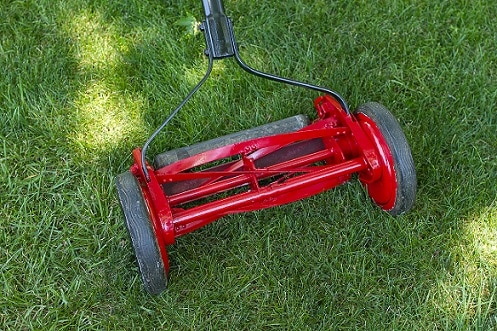
Rotary
Rotary lawnmowers have a single blade that rotates horizontally underneath the mower, like the propellers of a plane.
Rotary lawn mowers are the most versatile type and will cope with most types of grass. They are better than cylinder mowers at cutting longer and rougher grass.
A rotary mower may be powered by mains electric, rechargeable battery or petrol engine.
Hover
Hover lawnmowers hover above the ground, making them easier to push and adept at mowing uneven surfaces. They are a good choice for unusual-shaped lawns and cheaper than other types.
However, hover lawnmowers are not always suitable for larger gardens. They are usually electric powered and have rotary blades.
Lawnmower power options
Electric lawnmowers
Most lawnmowers are powered by mains electricity. This is the best choice for small and medium-sized gardens. The mowers are smaller, cheaper to buy and easy to store.
Check that the cable will allow you to mow to the end of your garden before you buy.
You should expect to pay £100 to £200 for an electric mower. Hover lawnmowers are cheaper, starting at around £50.
Cordless lawnmowers
Cordless battery-powered lawn mowers are a hassle-free garden mower. They have all the benefits of an electric mower but you don’t need to worry about a cable.
However, they can be more expensive than mains electric models because of the battery. Modern lithium ion batteries are lighter and last much longer than traditional nickel-cadmium versions, but they are more costly.
You should expect to pay £300 to £500 for a cordless lawnmower.
Petrol lawnmowers
Petrol-powered lawn mowers are the best choice for large gardens where a mains cable would be unsuitable. They are bit more expensive but much more powerful and faster at cutting. They are also easier to manoeuvre around large objects.
However, bear in mind that petrol lawnmowers will need servicing like car engines, and you will need to check and top-up the oil.
You should expect to pay £150 to £500 for a petrol lawnmower, depending on your power requirements.
Push lawnmowers
These are generally small cylinder lawnmowers that you simply push along with your muscle power. They are best for small gardens and don’t use electricity or produce noise and emissions.
However, push lawnmowers are not suitable for larger or sloping gardens or people who have difficulty pushing.
You should expect to pay £40 to £100 for a push lawnmower.
Lawn mowers for different garden sizes
Think of your lawn as a tennis court. A full-size court would be a medium lawn, half the court or less would be a small lawn. Anything bigger is a large lawn.
Here’s the mower maths:
- Small lawn (up to 100 sq m): electric and cordless lawn mowers.
- Medium lawn (100 – 250 sq m): electric, cordless and petrol lawn mowers.
- Large lawn (250+ sq m): petrol lawn mowers.
Other lawnmower factors to consider
Self-propelled
Some electric and petrol lawnmowers are self-propelled. This means that you don’t need to push them – simply steer them in the right direction!
It makes mowing much easier, especially with large lawns and heavy machines. Some models come with adjustable speeds, so you can set it to a comfortable walking pace.
Grass box
It is generally advised to collect grass clippings rather than leaving them on the lawn. Most lawnmowers collect the clippings in a box at the back. This is better than mowers that leave you to rake them up afterwards!
If you have a medium or large lawn, look for a high-capacity grass box. This will cut down how often you need to stop mowing and empty the box.
Mulch mowers
You can also get lawn mowers that chop up the grass clippings very finely and push them back into the lawn as mulch. These are sometimes called recycling mowers. The mulch adds nutrients back into the lawn.
The fine shredding helps the clippings break down quickly so they don’t smother the rest of the grass. Mulching mowers are expensive but a good choice if you don’t have anywhere to dispose of grass clippings.
Cutting width
A lawn mower’s cutting width refers to how wide a stripe the lawnmower can cut. A larger cutting width will reduce how much time you spend mowing the lawn.
Here’s a handy guide using the lawn sizes from above.
- Small lawn: 300mm cutting width.
- Medium lawn: 350-400mm cutting width.
- Large lawn: 400mm+ cutting width.
Cutting height
Cutting height refers to how high the grass will be when you have cut it. Most lawnmowers have adjustable cutting heights – you simply move the blades up or down.
This helps you dictate the height of the grass, and leave it longer in autumn or during dry periods. Cutting height ranges are usually 20mm to 60mm – see my section on proper mowing technique below for advice.
Rear roller
If you want the striped lawn finish you see on football pitches, you need a lawnmower with a rear roller. The heavier the mower and its roller, the longer your stripes will last.
Rear rollers also allow you to mow right up to the edge of the lawn.
Mowing edges
If you have lots of lawn edges, it is worth looking for a model that can cut right up to the edge. Generally cylinder blades or versions with rear rollers are better at this.
Any mower with inset front wheels or a grass collection comb is also great for mowing edges – no need to go back round with a strimmer.
Robot lawn mowers
Robot lawn mowers are becoming more commonplace these days. The technology is getting better all the time and they can now recognise obstacles and lawn edges. And they are a lot more affordable, though still not cheap.
Robot lawnmowers are for you if you really, really hate mowing the lawn. There is some set-up involved as you have to lay a perimeter wire. Then just leave the mower to get on with cutting. Some models even ‘self-park’ into a charging station after mowing.
Proper mowing technique
Now you have the best lawnmower, you need to get your mowing technique sorted too. A great-looking lawn needs a regular mowing regime that encourages the grasses to develop fine leaves. It also keeps the growth lush and dense, and stops weeds and moss spreading.
The single biggest mistake most people make when cutting the lawn is to cut too low. This is known as ‘scalping’ the grass, and can seriously weaken it.
For normal lawns that get wear and foot traffic, keep the grass around 5cm high. For ornamental lawns that don’t get used much, you can go as low as 2.5cm.
Always remove leaves and grass clippings after mowing and feed the lawn in spring and autumn with special lawn fertiliser. Make sure you choose the right one – spring feeds encourage leafy growth and autumn mixtures build stronger roots.
More lawn tips
How to revitalise your lawn and get greener grass
Top 8 lawn care tips for spring
David Domoney is a Chartered Horticulturalist, Broadcaster, and Author. David has worked with a number of the UK’s leading garden retailers as a plant buyer and strategic consultant. With more than 30 years experience, in horticulture, David is as passionate about plants now as he was when he bought his first plant at a village fete.

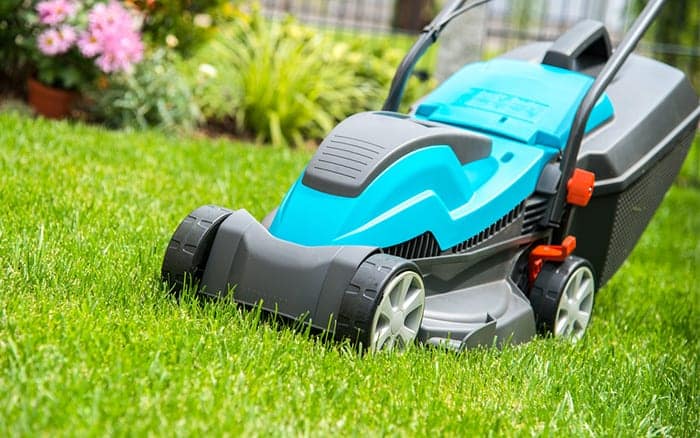
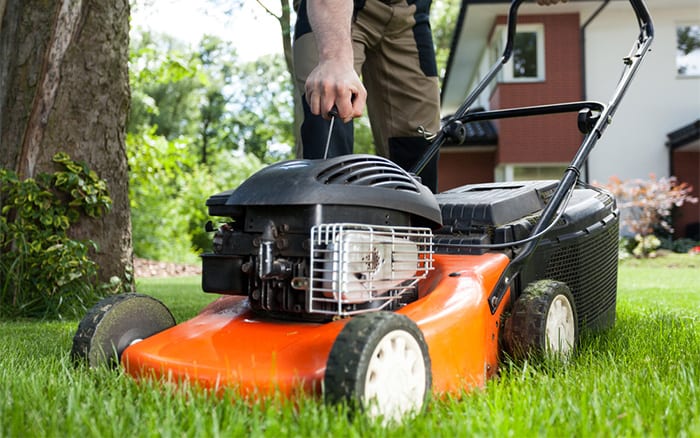
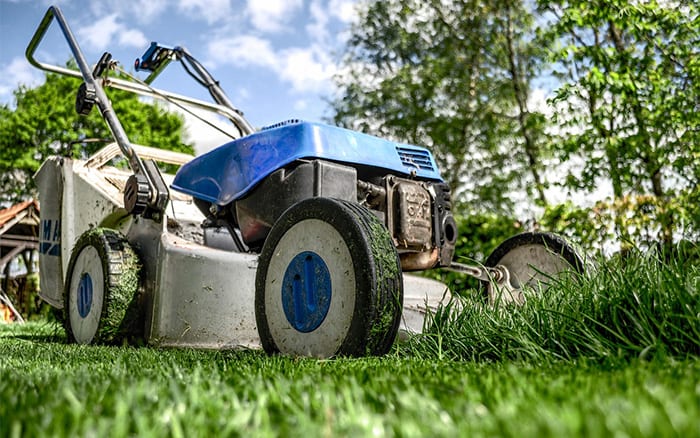
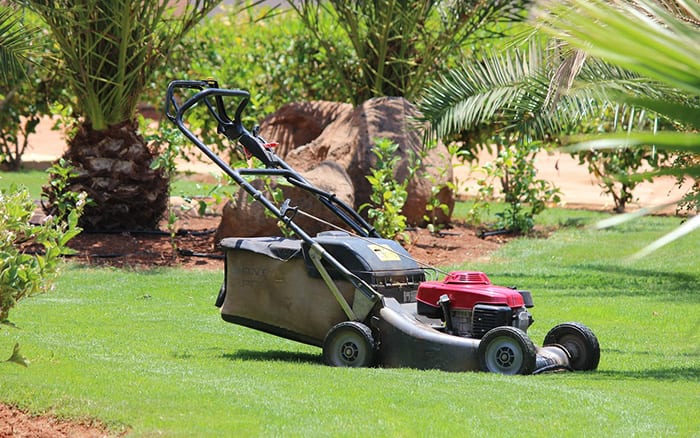
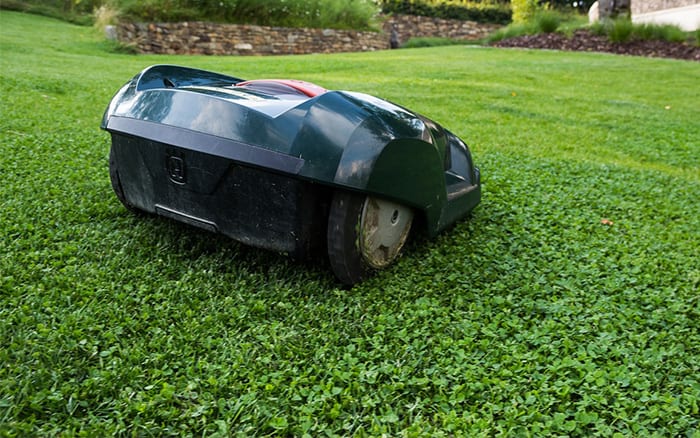






Thanks for great sharing. A great lawnmover will make a great garden.What a tidy garden!
This was such an interesting read, am helping a friend do some gardening and will be renting an electric lawnmower from Fat Lama. Great tips on avoiding scalping the grass, will definitely make sure we bear that in mind!
I am a little lazy and I don’t generally clean my mower. So, I liked that you pointed out that can make a huge problem later on with the mower. I wonder if riding mowers will be easier to clean than a push one.
Regardless of what you decide, you should definitely go for a lawn mower that’s self propelled. That’s a must! I guess you don’t want to buy a machine that will get things even harder and difficult to finish.
I like that you mention that most lawnmowers have adjustable cutting heights, so it opens up your options when looking for one. I just moved to a new home and the yard is a lot bigger than the one at my old home. I’ll have to get a new lawnmower that is better equipped to handle the size of my lawn.
There really is a lot to consider when buying a lawn mower, but I particularly like that the article brings up cutting height and width. After all, if you’re planning to cut grass for a commercial property then they might have specific guidelines that you have to follow. In order to make sure that this happens you need to make sure that the mower you’ve bought can actually be adjusted to those specifications.
Thank you for the post on how to choose the right lawnmower. I definitely like the idea of having a battery powered mower that you can charge and use. You could save on gas that way but you want to be sure whichever you get can handle the grass in your yard.
My husband and I have been having trouble mowing with our current equipment, and we’re looking for a new mower. Your article had some great tips for choosing a lawn mower, and I really liked how you said to consider a cordless mower, as this functions like an electric without the cord. Thanks for the helpful post; this will be useful when choosing a lawn mower for our needs.
Robotic mower is very use and amazing but is quite costly Thank you for the post.
I have both: a reel mower and a self-propelled. I can use them in different areas of our lawn. I love the reel mower, so many memories follow me as I use it having grown up with them and helping my Dad mow with them (back when they were made with more wood than metal). Thanks for the article!
Query on rotary mowers.
Which is better – a long single blade or two/four shorter multi blades fixed to a rotating plate?
Hi Richard, a single blade will give you a cleaner cut as there is chance with 4 blades one blade could be off slightly and you miss bits.
This is one of the best articles I have seen in a long time! Thank you for sharing~
Thank you